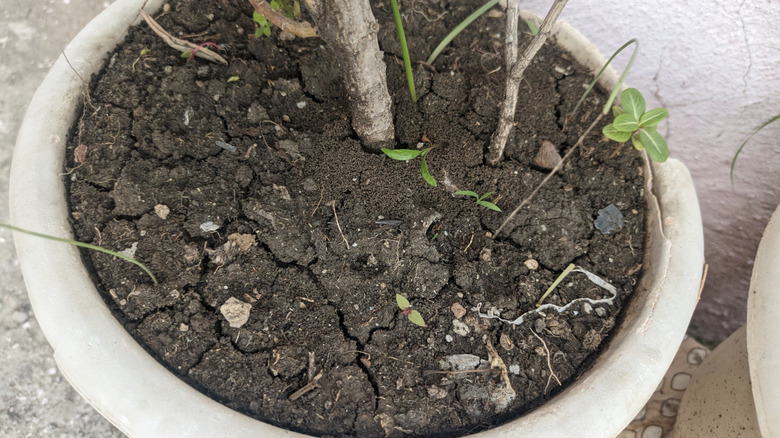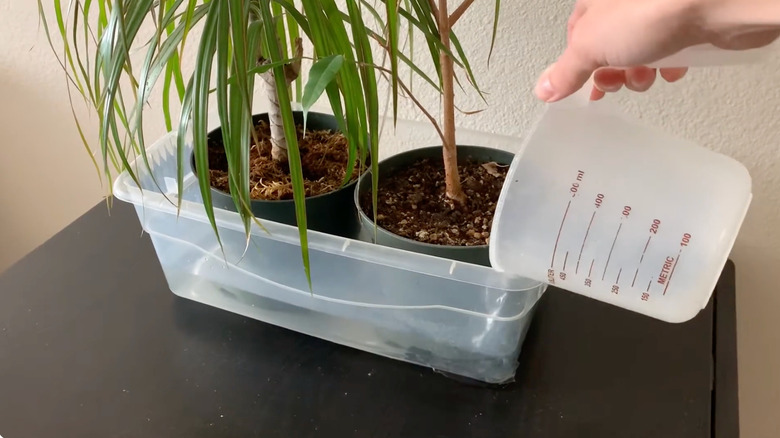How To Revive Hydrophobic Soil In 3 Easy Steps—your Dying Houseplants Will Thank You
Has this ever happened with any of your houseplants? You water the plant, but the water rushes right out the hole at the bottom of the pot. You notice a gap between the side of the pot and the edge of the soil, and the soil feels excessively dry. You may even be able to easily pull the plant out of its pot by its stem. Why is the soil not absorbing water when it's obviously in desperate need? This is a case of soil hydrophobia, in which soil actually seems to repel water even though it's extremely dry. It happens because water seeks more water to bond with; finding none on the soil's surface, it may just pool there and not soak in. Water may be missing the roots altogether as it flows through the pot and out the hole, and re-wetting the soil can be a challenge. Luckily, you'll just need to loosen the soil, water from the bottom, and add some amendments to resolve the issue.
Soil hydrophobia has a few causes, including soil ingredients. Peat moss is an often cited culprit as it is hard to re-wet once it dries out. Another cause, though more common in outdoor situations than in houseplants, is decomposing organic matter that leaves a waxy coating on soil particles, causing them to repel water. Allowing soil to become hydrophobic is the simple watering mistake that's killing your potted houseplants.
The three steps that fix hydrophobic soil
The simple three-step process to fix hydrophobic soil begins with breaking it up. Just as farmers use hoes to break up the hydrophobic layer in fields, you can do a small-scale version of this with an implement such as a pencil, skewer, knitting needle, or chopstick. Just poke holes evenly through the soil.
Next, you'll need to bottom water your houseplants. Locate a container large enough to fit your planters. Place the potted plants inside and fill the container with enough water to submerge the plants. You may need to hold them down because the air in the plants' root balls can make them float. Remove pots from the water after air bubbles stop coming up. A variation on this method is to add a shallow amount water to the container and allow them to sit in the water for an hour or so to soak up the water. Going forward, consider the easiest way to bottom water plants that's hiding in your bathroom — your bathtub — as the location for your regular watering ritual so you know water is saturating your plant's roots.
Finally, work some organic material, such as compost, into the soil to support it now that it's rehydrated. Organic matter will help the soil stay looser and more aerated. This kind of soil structure will help with moisture retention and avoid this problem in the future.

